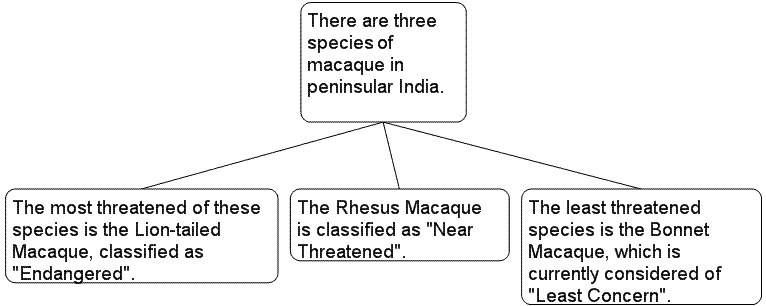The Science Of Scientific Writing Set A Intro to Paragraphs Features of Maps Examples of Maps Exercise 1 Quiz Diverse Organising Principles Example Exercise for Exercises 2-4 Exercise 2 Exercise 3 Exercise 4 Adding Non-core Content Exercise 5 Exercise 6 Exercise 7 *Exercise 8* Final Page.
OVERVIEW: The way to well-written science
PART I: Paragraphs and Sentences
SET A: Paragraphs: The Maps Behind Them
SET B: Paragraphs: Using Maps to Meet Readers' Expectations
SET C: Paragraph Coherence and Cohesion
SET D: Sentences
SET E: Scientific Sections (including Methods)
SET F: Scientific Sections: The Discussion
SET G : Scientific Sections: The Introduction
SET H : The Paper as a Whole
Organising Principle Diversity
We have seen that there are three main types of maps
- Descripton/Report
- Explanation
- Argument
..and that in each type of map there is a characterisic type of inter-relationship between the information in the top box and the rest of the map, and also between any lower box and its own "daughter" boxes. We can say that each map type has its own unique Organising Principle.
When we work more closely with Descripton/Report maps, we see that as well following their primary Organising Principle (i.e. either Description or Report) we often find ourselves organising the boxes in accordance with a secondary Organising Principle. For example, consider this description map from the Quiz:

Note how the three macaque species have been sequenced, left to right, in accord with their conservation status. Secondary sorting of the content of descriptions (and reports) with respect to the degree of some characteristic is extremely common. In descriptive science writing, items may be sorted according to size, body weight, molecular weight, population density, etc. Another common secondary Organising Principle is sorting according to natural categories. Thus, if we were describing all the species of vertebrates found in a particular forest, we would probably group them according to their accepted taxonomic divisions (mammals, birds, reptiles, amphibians). Genes being expressed in a cell at a given might be sorted according to function (e.g. housekeeping, cytoskeletal, etc.)
Likewise, when we report, left to right, the various steps in the procedure below, we "naturallly" put them in chronological order:

Chronological sorting is particularly common in the Materials and Methods section, and may sometimes be used in the Results section.
Secondary organising principles can also help to structure Argument and Explanation maps. For example, in the argument below, the four reasons are sorted into two "groups" (left to right) accoding to the style of argument used.

Alternatively, the four main reasons in the argument above could have been grouped on the basis of related content (i.e. ocean-related or land-related).
Finally, we might sequence argumentative and explanatory content on the basis of argumentative or explanatory power.
......